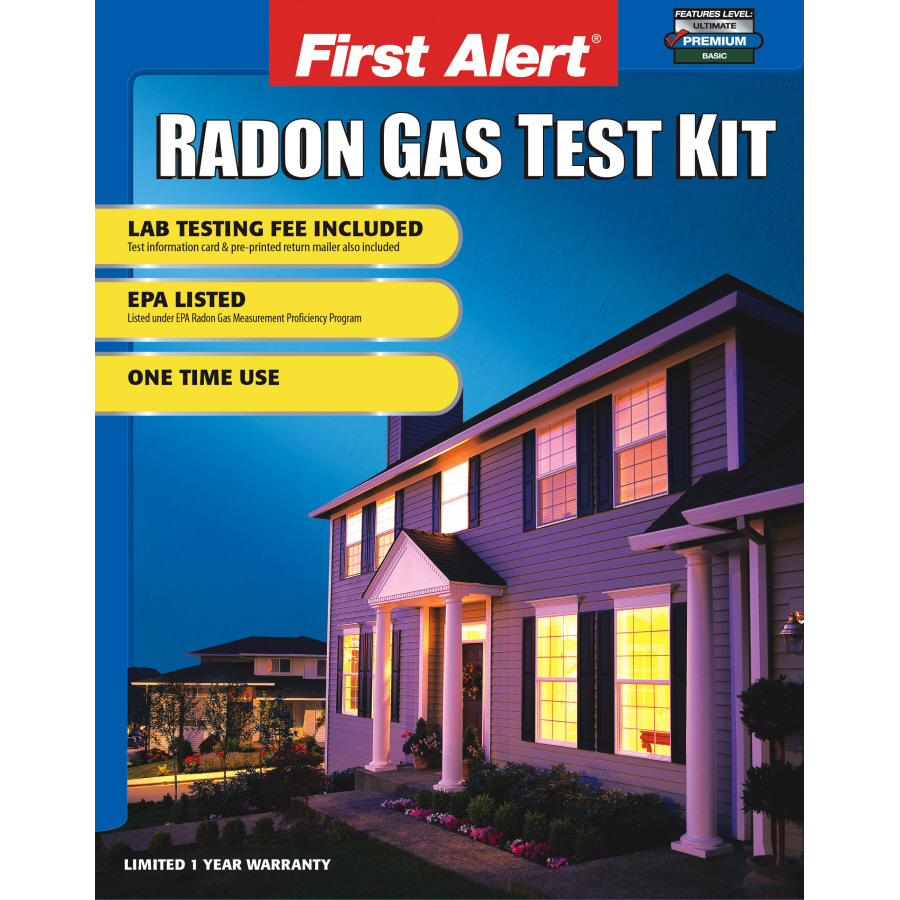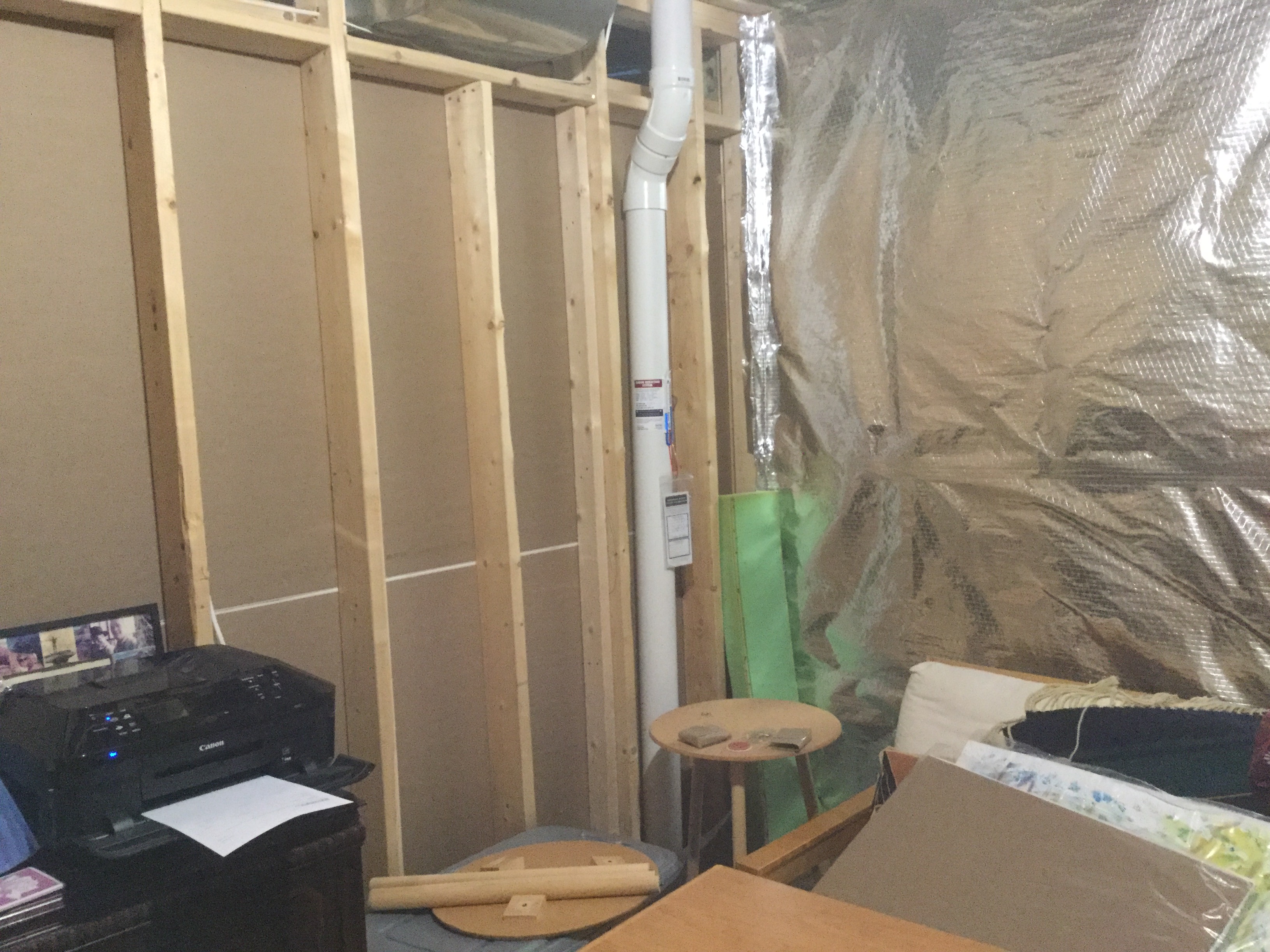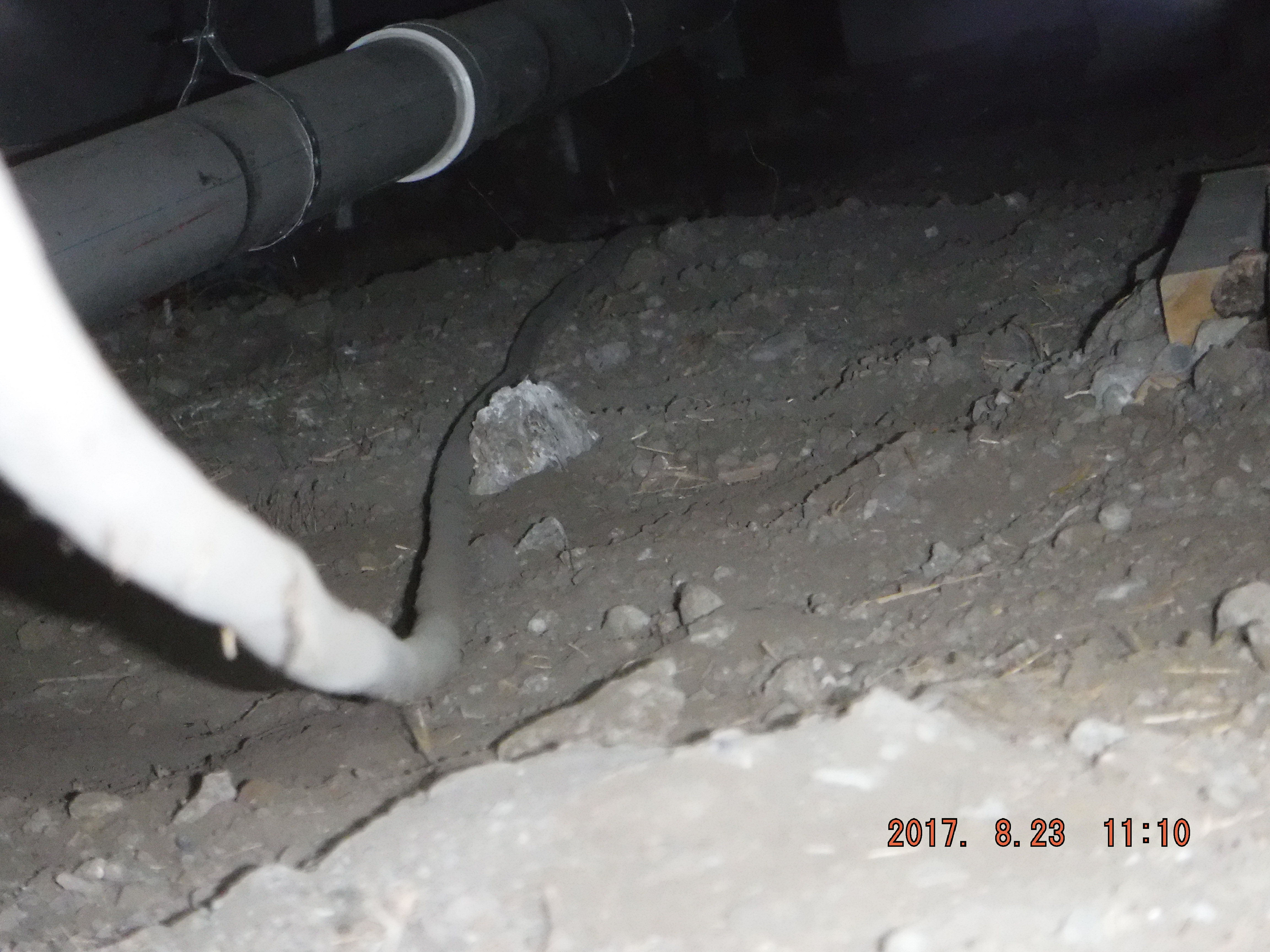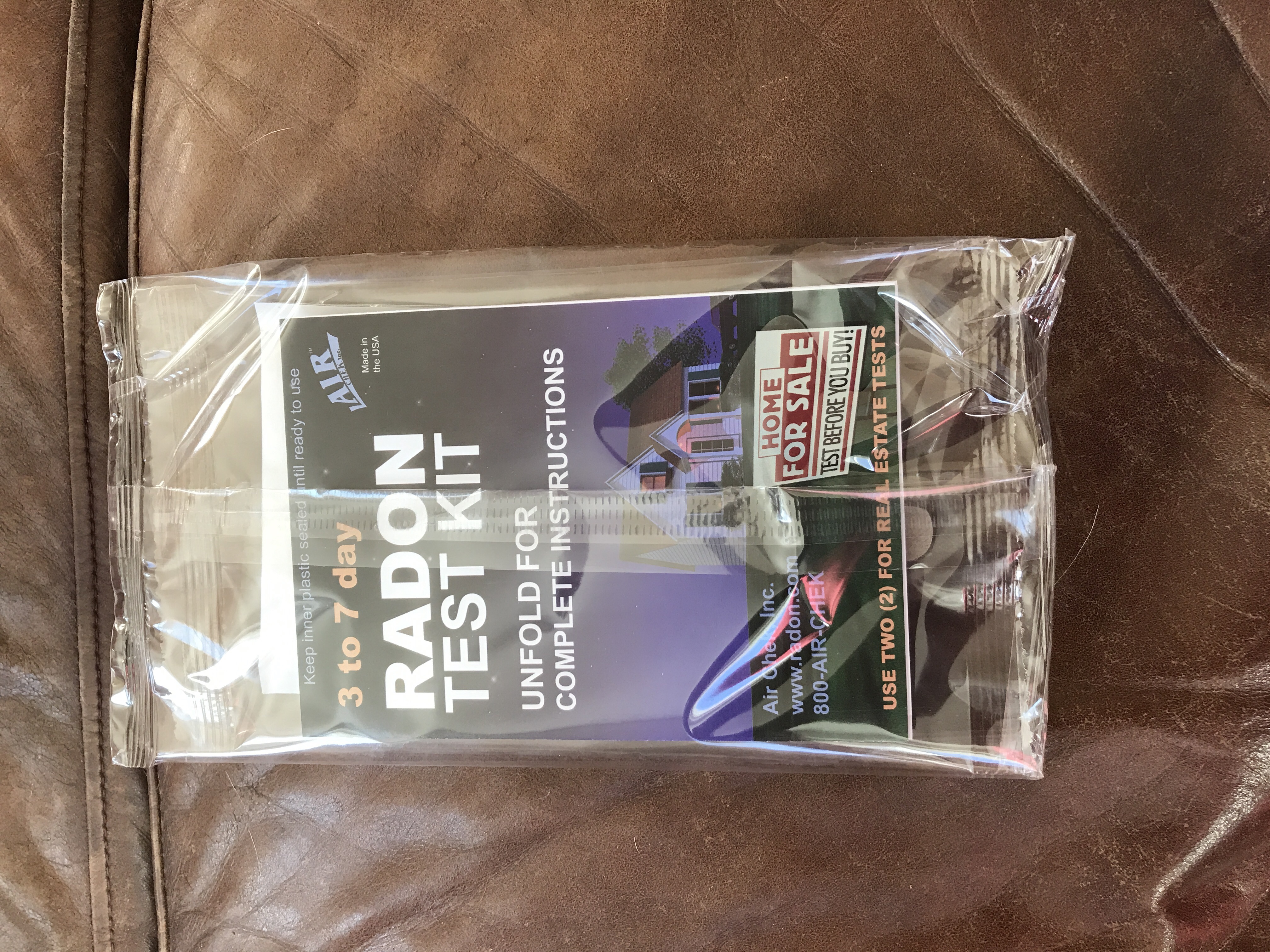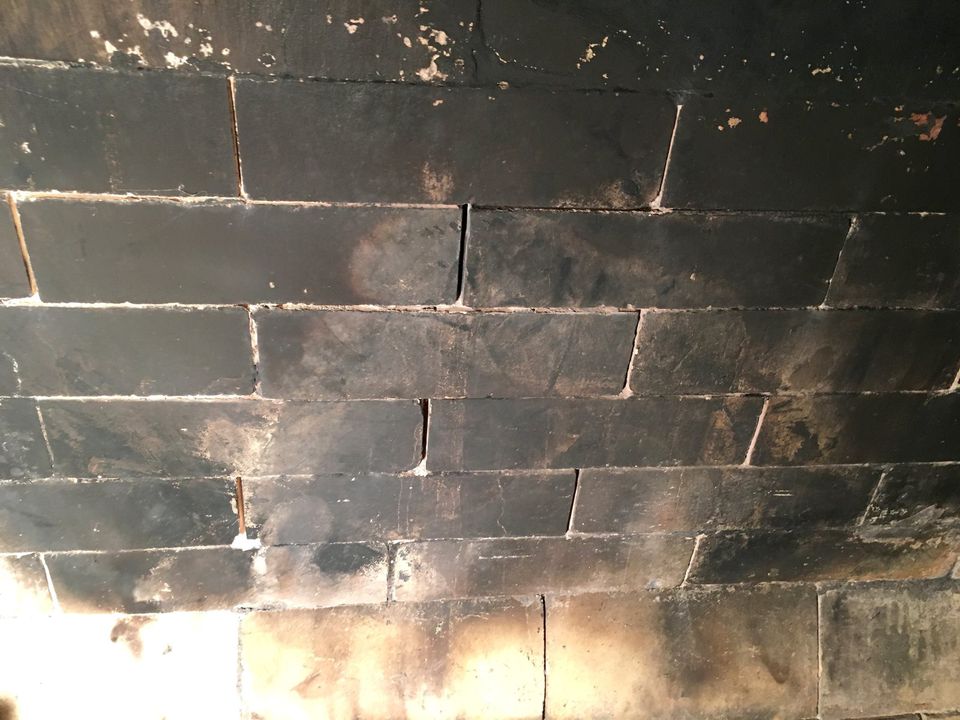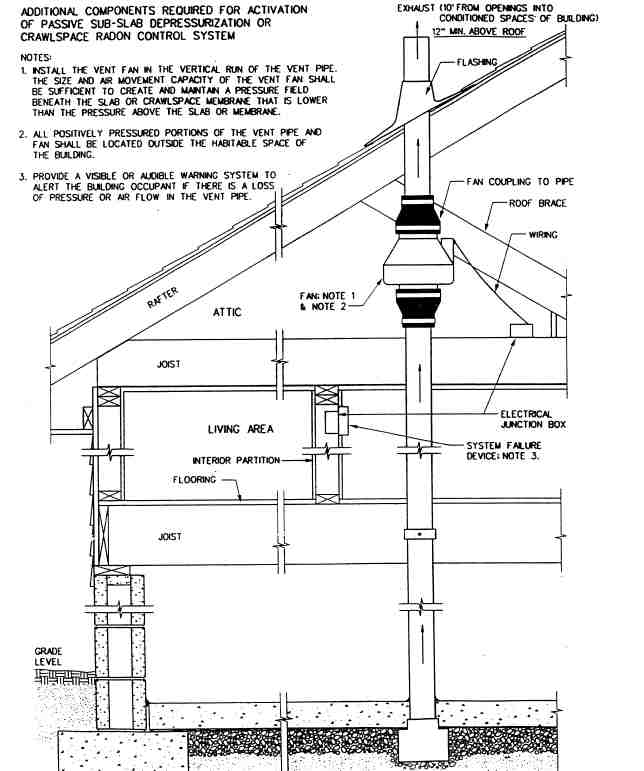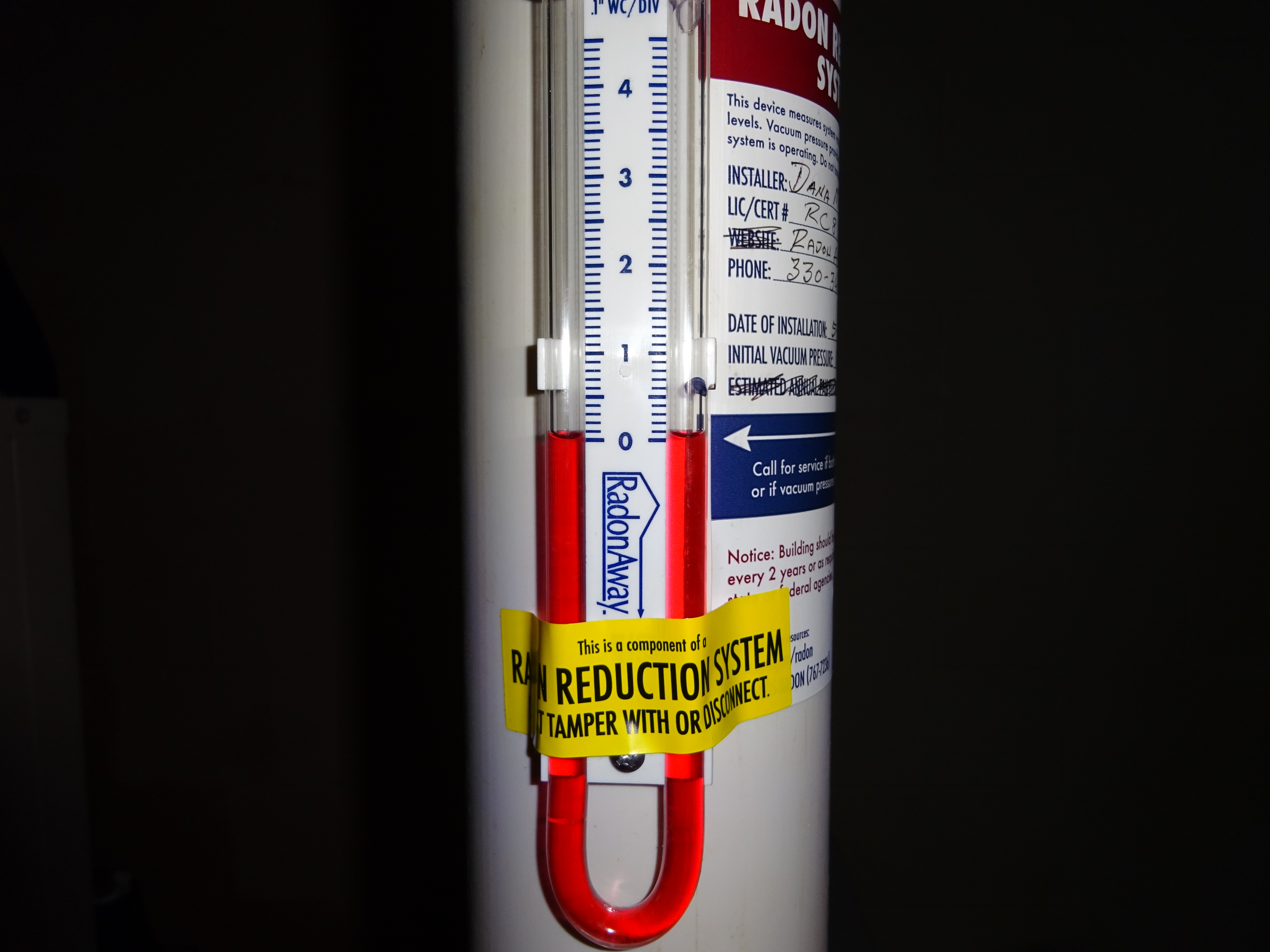This picture is of a radon test that can be purchased at many home improvement and like stores. The directions should be followed and simple tests like this should only be used to identify if further exploration/tests should be performed. Testing for radon requires a laboratory and there are many different methods that could be used for more involved tests. Water tests should be done only if radon gas is found in the air and is over specified levels.
Image retrieved from www.lowes.com
Homes within zone 1 have the highest probability of being affected by radon. New homes should consider installing a radon control system. Existing homes should also install these control systems, however; it is much easier to seal new construction. Therefore, taking as many precautions as possible will decrease the likelihood of a resident coming into contact with the emitting alpha and beta particles which is a known carcinogen.
This is a picture of a radon reduction system in the basement. The house was originally built with a passive system. When my clients purchased the house they had a radon test performed and the results were high. The owners had a fan installed in the section of pipe above the roof. I understand that radon reduction systems shouldn’t be installed in habitable spaces. However the door to this room also houses HVAC equipment and the door bottom is not tight. So this situation makes me want to research all of the odd little situations we inspectors may run into. And they are thinking of finishing this space with drywall. The pipe would be boxed in. So there’s another topic to research: does boxing in a pipe make it out of the habitable zone of the house?
This crawl space has a significant hazard that needs to be taken care of before installing the radon mitigation system. The main power cord is laying on the exposed ground with rocks and debris up against it. There are nicks and kinks along the length of the cord. Any of these things could cause exposure to the copper core and cause electrocution.
A diagram from the gallery Architectural Drawing of Crawl Space Depressurization Radon System might be a good drawing to have when inspecting a radon system. It shows a lot of the components that need to be inspected like seals on the plastic membrane, rubber seals on vent stacks, pvc connection joints and other items. It is sort of a pictured checklist.
Radon gas is an odorless, colorless gas produced by the decay elements found in uranium. Radon is found to be the second leading cause of lung cancer amongst non-smokers. There is radon gas everywhere but where it comes a danger is in the high concentrations that can build up in homes through cracks in the concrete of a basement, sump pits, flooor drains or any opening allowing the gas to travel up through the soil. There are many ways to test for radon which can all be effective in identifying if mitigation is needed.
Radon Mitigation system- This system is installed through the basement floor with the pipe ran up and into the attached garage. The vent fan is in the rafters of the garage. The system appears to be properly installed. During the inspection an electrical junction box was identified as missing the proper cover. Recommended repairs by licensed electrician.
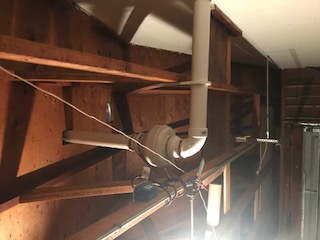
Dryer Vent Safety - It’s important to understand the importance of proper dryer vent installation. Dryer vents have caused fires, injuries, and death along with millions of dollars of real estate damage. The vents should be less than 25’ long with a reduction in length of 2.5’ per 45 degree elbow and 5’ reduction per 90 degree. They must be vented to the outside of the structure never venting into attics, basements, and crawl spaces.
When testing a home for radon levels, the home must be in the normal living state for at least 12 hours prior to the testing. When using a continuous type monitor it must sample for at least 48 hours and must not be moved. When mitigating radon gases it is important to create a safe pathway away and out of the house to allow for safe living conditions. See attached diagram.

An active sub-slab depressurization system using a fan to mechanically draw air from beneath the slab (or membrane) through the vent pipe. A passive radon venting system system uses a vent pipe installed below the slab which is routed above the roof line and does not need a mechanical fan.
Radon: If you are buying or selling a house you need to have radon levels tested. If you are buying a new home ask if radon resistant measures were taken when the house was built. If when tested the levels are 4 picoCuries per liter or higher the EPA recommends mitigation. There are various ways to mitigate depending on different foundations and site requirements. Levels can be brought down to a safe level with the use of these various methods.
The image shows the installation of two types of typical roof flashings. A flashing used for roof ventilation of a radon mitigation system would adhere to approximately the same standards of installation to prevent water penetration into the structure below.
The image “Passive Sub-Slab Depressurization System” depicts one method of mitigating the presence of radon in a building. Typically a system of this type is installed in new construction as a preventive measure in areas where radon is a known concern.
The basement fireplace has cracked grout around the bricks. The grout seam should be filled and sealed with a heat, and air tight, approved sealer to prevent dangerous gases from entering the home. Recommend a qualified contractor evaluate and make necessary repairs.
Due to the fact that radon gas is heavier than air it is vital to take special precautions when installing a home ventilation system, particularly on vertical plumbing, you should always have fans installed in order to move the gas, up and through, the pipes.
It is important to note that when installing a vertical vent stack for radon mitigation that a vertical fan to assist in upward air flow is necessary and one way flow valves should be incorporated to prevent back flow of air in the pipe
It is important to have your home tested for radon. The EPA estimates 1 in 15 homes may have high radon readings. Determine if radon reducing construction was used and if the home has been radon tested, make sure the test is less than 2 years old.
This is a picture of a manometer installed in the vent pipe of an active SSD radon reduction system. The reading is showing that there is no difference in pressure between ambient air and sub-slab air. Discovered that this was caused by the vent fan failing.
I read the article “Pellet Stoves for Inspectors” and learned that pellet stoves outer surfaces do not get as hot as traditional wood burning stoves. I was amazed to find that with some models they can be placed just a few inches away from a wall.
